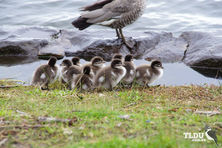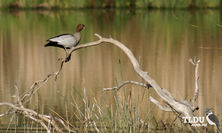
Shoppers Feedback:
Jan 17, 2017
Hello Ros,
I have now paid the invoice, but I would like to write to you just to say a big THANK YOU for getting me the Penguin!
The ChatterMate Penguin became a nice memory for me when I was in New Zealand, and I am so greatful to you for arranging so that I could have it! :-)
Thank you so much!!!!!!!!!!!
Regards,
Malin
Hi Ros,
Many thanks for your very kind email. I really appreciate your prompt reply!
I appreciate your advice regarding the decorations and customs. These are a gift for my daughter’s exchange student family so when she returns home on the weekend I will show her and see if she loves them as much as I do!
Thanks so very much again - I am truly grateful for your kind assistance.
Kind Regards
Bernadette
Ros,
Thanks again for the great customer service. It's a refreshing change!
Best regards,
Trevor
Hey Roz,
Thank you for your emails. Just loved my first order. The cute little Aussie bush critters are going to be used for an office Christmas decoration. My colleagues also liked them and talked about making an order to your site. I'll send you a photo when completed.
I'll be ordering more to send to my daughter's host family in America.
Fabulous service from you.
Kind regards,
Michelle
Thankyou. Order arrived today. One very happy grandson with his new beastly binoculars.
Regards,
Irene
- Home
- Wild Wonders
- Shop
- Aromas of Australia
- Australian Made
- Books
- Book Marks
- Christmas Decoration Sale
- Christmas Decorations
- Clocks
- Drink Holders
- Garden & Outdoor
- Gift Wrapping & Cards
- Home & Giftware
- Jewellery
- Keyrings
- New Products
- Pencils & Pen Holders
- Photo Frames
- Plush Toys
- Plush with Sound
- Sheepskin Rugs
- Stationery
- Stone Carvings
- Toys & Games
- Travel Goods
- Wedding
- Wild Figurines
- Wildlife Safety Products
- Wind Chimes
- Wine Charms
- View All Products
- Wildlife
- Australiana
- Explore
- Contact Us
Australian Wood Duck

Quick Facts
| Length: | 47 cm |
| Height: | - |
| Weight: | - |
| Colour: | Dark brown head, pale grey body with a speckled brown-grey breast with 2 black stripes along the bac |
| Habitat: | Grasslands, open woodlands, wetlands, flooded pastures, inlets and bays. Rice fields, sewage ponds a |
| Food: | Grasses, clover, herbs and occasionally insects. |
| Predators: | - |
| Status: | - |
The Australian Wood Duck is a medium-sized 'goose-like' duck with a dark brown head and a pale grey body with two black stripes along the back. Males have the darker head and a small dark mane, with a speckled brown-grey breast and a black lower belly and undertail. The females have a paler head with two white stripes, above and below the eye, a speckled breast and flanks, with a white lower belly and undertail. In flight, the wings are pale grey above, contrasting with black wingtips, and have a noticeable white bar on the underside (the secondaries). They walk easily on land and may be seen perching on logs and in trees. They will only take to open water when disturbed. This species is also known as the Maned Duck or the Maned Goose.
The Australian Wood Duck is found in grasslands, open woodlands, wetlands, flooded pastures and along the coast in inlets and bays. It is also common on farmland with dams, as well as around rice fields, sewage ponds and in urban parks. It will often be found around deeper lakes that may be unsuitable for other waterbirds' foraging, as it prefers to forage on land.
The Australian Wood Duck eats grasses, clover and other herbs, and occasionally, insects. It is rarely seen on open water, preferring to forage by dabbling in shallow water, or in grasslands and crops.
The Australian Wood Duck forms monogamous breeding pairs that stay together year round. It nests in tree holes, above or near water, often re-using the same site. Both parents feed young and young birds remain with them up to a month after fledging.
Like other waterbirds, the Australian Wood Duck hatches with a covering of waterproof down and can enter the water almost straight away.
The Australian Wood Duck has benefited from the creation of dams and irrigated crops on farmlands. It can sometimes damage crops and pastures.
Last Updated: Monday 15th July, 2013
BirdLife Australia - www.birdlife.org.au
BUSH e-TELEGRAPH
Signup for our monthly newsletter the "e-Telegraph"
Quick Links
Home | The Beginning | About The Land Down Under | Wild Wonders | Advertise on Wild Wonders | Christmas Decoration Sale | Christmas Tree Decorations | Drink Holders | Plush with Sound | Stone Carvings | Wildlife Wine Charms | Freebies | Australian Wildlife | Help Our Wildlife | Australiana | Photo of the Month | Explore The Land Down Under | Contact Us | Legal Notices


